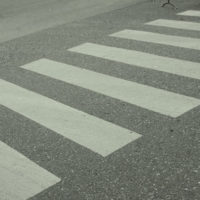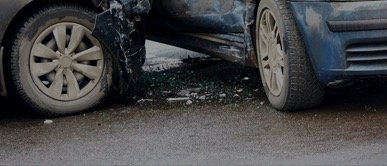Are You Liable for Your Own Pedestrian Accident Injuries?

If you were hit by a car when crossing the street or if a driver ran into while you were walking along the shoulder, it can feel like the accident was your fault. After all, cars belong on the road, and walkers or bikers should be on the lookout for them, not the other way around, right? Wrong. Drivers have a duty to other drivers, bicyclists, motorcyclists, and pedestrians to exercise caution and vigilance before performing any maneuvers. If a driver fails to exercise said caution and hits a pedestrian, that driver may be held liable for injuries. If you want to learn more about your rights as a pedestrian reach out to the Tampa pedestrian accident lawyers at Barbas, Nuñez, Sanders, Butler & Hovsepian, or review the information in this post.
Rules and Regulations for Florida Pedestrians
If you want to know whether or not you are liable for your own injuries, you need to first understand the laws that apply to your case. Though there are many, Florida Statute 316.130 highlights the most relevant.
It is important to note that much of this statute highlights pedestrian restrictions. These restrictions are in place to protect you, not make life inconvenient for you. For instance, the very beginning of the statute states that all pedestrians must obey traffic signals, traffic control devices, or a police officer. If there is a sidewalk, pedestrians must use it. Walking along a paved roadway is prohibited, except in special circumstances (which is something to take note of). If a pedestrian is forced to walk along a highway, he or she must walk along the shoulder on the left side of the road, facing traffic approaching from the opposite direction. People are not prohibited to stand on a paved road way for the purpose of soliciting rides, employment, or business from a vehicle occupant.
Rules and Regulations for Florida Drivers (in Relation to Pedestrians)
Though a pedestrian has a duty to look out for his or her own safety by adhering to the aforementioned rules, there is only so much that a person can do to prevent injury. The saying, “it takes two to cause an accident,” is just as true in car accident cases as it is in pedestrian accident cases. Under the same statute, a driver is required to stop at an intersection and before entering a crosswalk to check for pedestrians. If there is one or more present, the driver must allow the person to completely cross the road before proceeding through the intersection. Unless there are signs indicating a driver do otherwise, a driver must yield the right of way, slow down, or stop if necessary to allow a pedestrian to cross a crosswalk. However, if a crossing is located in a pedestrian tunnel or overhead pedestrian crossing, the pedestrian is required to yield the right of way to oncoming vehicles. The same is true when a pedestrian is crossing where there are no marked crosswalks; the pedestrian must yield the right of way to all vehicles.
However, if a pedestrian is crossing a road where there is no marked crosswalk, and if a vehicle has stopped to allow him or her to pass safely, the driver of an approaching vehicle must stop as well.
Of course, there are dozens of other laws that may apply to your case, all of which a skilled attorney is aware. Now that you understand some of the laws in place to protect both you and drivers, the question still remains: are you liable for your injuries?
Determining Liability in a Pedestrian Accident Case
Liability in a pedestrian accident case hinges on a number of factors, the biggest of which are: which laws were broken and who broke them? For instance, if you were forced to walk along the shoulder of a highway because your vehicle had broken down, and you did so in accordance with state law—on the left side of the road facing traffic coming from the opposite direction—and a vehicle hit you regardless, the driver may be liable. However, if you were walking along the should of a road when a perfectly good sidewalk was two feet to your right and a vehicle hit you, you may be accountable for your injuries, as it was you who broke the law.
You can also share liability in your accident in Florida. For instance, say you decided to run across a crosswalk at the moment the walking person started to blink (an indicator that no more people should begin to cross). Oncoming traffic’s light turns green and you are only halfway through the intersection. A vehicle does not notice that you are in the crosswalk and makes a right turn, hitting you before you have a chance to get to the other side. In such an instance, both you and the driver may be held liable: you, for not abiding by the traffic signal, and the driver for failing to check for pedestrians before entering the crosswalk.
The best thing you can do if you were hit by a driver while walking along the road or crossing the street is to contact a skilled Tampa pedestrian accident lawyer. An attorney can build a case proving your innocence or, at the very least, prove that the driver was mostly accountable. Call the law offices of Barbas, Nuñez, Sanders, Butler & Hovsepian to schedule your free consultation today.
Resource:
leg.state.fl.us/statutes/index.cfm?App_mode=Display_Statute&URL=0300-0399/0316/Sections/0316.130.html




